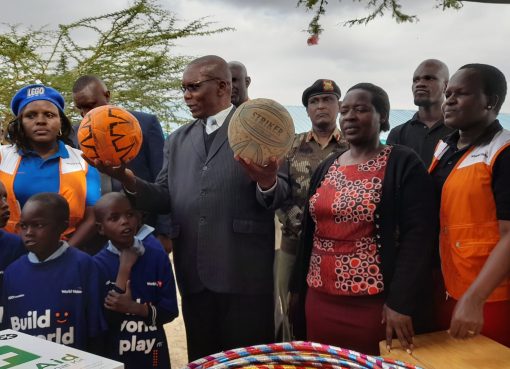It has always been said that the future of any nation solely depends on the youth, and a miscalculation on their rights to health, education, social norms, and morals could comprise the nation’s fabric.
But as the country plays its role to ensure the youth have a future to inherit, parents and guardians should also play their pivotal role to nurture, take care of, and assist their young ones to live uprightly.

The remainder of the work to be done is for the youth to stand up, embrace, and absorb what the parents and the nation have to offer to ensure their inheritance is preserved.
However, young people’s and adolescents’ place in society cannot be guaranteed if their deeds are not in line with the societal norms.
For instance, the ever-rising HIV infections among young people and adolescents in Migori are in an alarming state.
Fifty-one per cent of new HIV infections is not only high but quite disturbing, and this emerging trend, particularly among the adolescents and young people in Migori, presents a possibility of reversal in the gains made so far on matters of health.
A future generation that is unhealthy will be unproductive and may lead to the reduction of the economic-generating activities and income.
According to Migori Deputy County Child Adolescent Coordinator Faith Osiany, the 51 per cent new HIV infection rate is a worrying trend that may jeopardise the future of the next generation.
But what might be the major reasons for these alarming new HIV infections among the youth? For many years, poverty, lack of right and accurate access to health information, and Sexual Gender Based Violence (SGBV) have been blamed for the surging of new HIV infections in the region.
As the years progressed, other factors started to emerge, such as a lack of proper parenting and the narrow concept of using contraceptives as a license to engage more in sexual activities, especially among the youths and adolescents.
This, adds Osiany, has consequentially exposed the young people to the new HIV infection and Sexually Transmitted Infections (STIs).
Even though there is no direct link between new HIV infection and misuse of contraceptive methods, a slight relation in increased sexual behaviour among adolescents and young people may have been a contributing factor for the surging new HIV infections.
Osiany says that it is important to continuously sensitise and educate the youth and adolescents on the importance of not abusing contraception for sexual pleasure.
The usage of contraceptives helps to eliminate unnecessary pregnancies but does not make one immune to STIs and HIV, and it’s the responsibility of the guardians to properly educate and sensitise their adolescent children on the importance of contraceptives.
There is a need for prevention and intervention efforts by other sectors outside health to play a critical role in subduing the new HIV infections among adolescents.
In Migori County, Lwala Community Alliance, a local non-governmental organisation (NGO), has been at the forefront of educating and sensitising the youth and adolescents on the triple threat effects of new HIV infection, early marriages, and Gender Based Violence (GBV).
The organisation has been engaging the young people and adolescents in Migori during the holiday sessions by educating, training, and sensitising them on issues of HIV, early marriages, Gender Based Violence and the usage of contraceptives.
To ensure what is trained is retained, social tools like plays, drama, music, art, and sports have been utilised to create a long-lasting memory of how the youth could protect themselves.
Lwala Community Alliance Programme Office for Youth and Adolescent Rebecca Mbom recently disclosed that they have been working closely with the community health promoters, community advisor boards, Dream Girl’s initiative, and youth peer providers in initiating intervention messages and dialogues to curb triple threat effects.
Mbom explained that there is a need for increased access to prevention and treatment interventions, increased access to information, and high-level political advocacy from health partners, county governments, and national governments to curb new HIV infections.
She encouraged parents and guardians to be the first responders to messages from their young ones to help eliminate early pregnancies and new HIV infections.
According to the Kenya National Adolescents and Youth Survey Report, HIV and Aids, and other sexually transmitted infections (STIs) were identified as the main health issues facing young people and adolescents.
The report highlighted that the provision of social safety nets for young people and adolescents, like access to education and health services, increased job opportunities, integrated services that target the youth, and giving the young people a stronger voice in the health decision process, would help to curb new HIV infections, early marriage, and GBV.
The official disclosed that positive health behaviours acquired during the adolescent stage would always inform future health outcomes in adulthood, adding that adolescents could be powerful agents of personal change and community development.
“It is important to incorporate young people and adolescents to be more prominent within future public health policies and programming in Kenya to solve the triple effects that affect them directly,” said Mbom.
By Geoffrey Makokha and George Agimba





